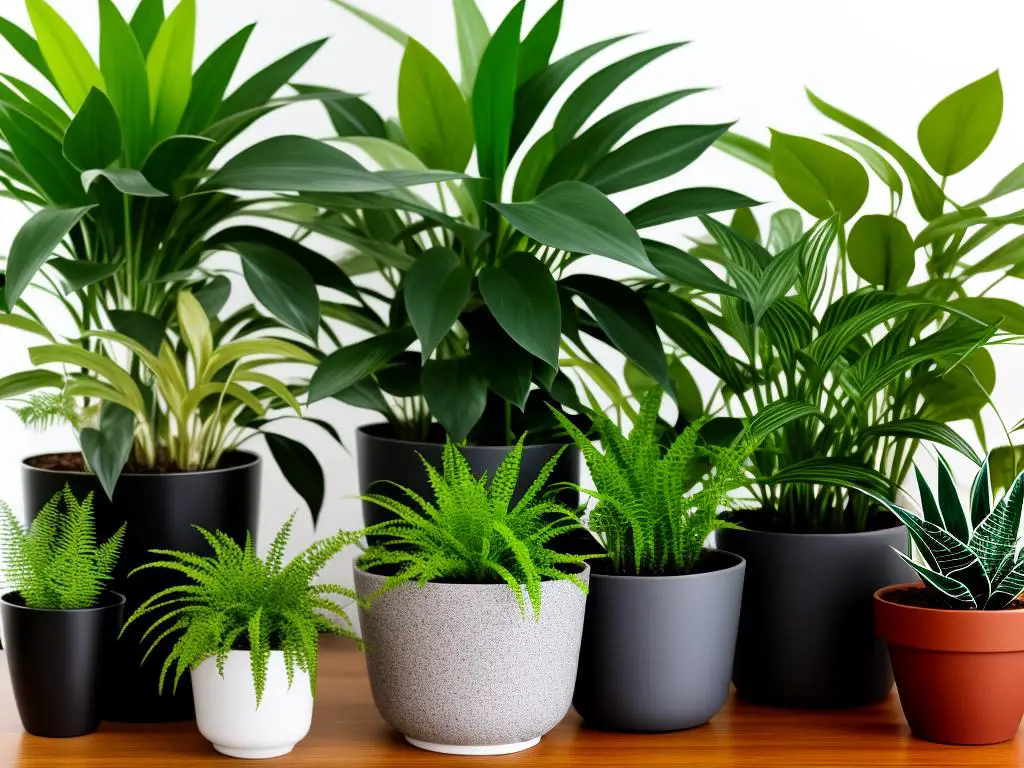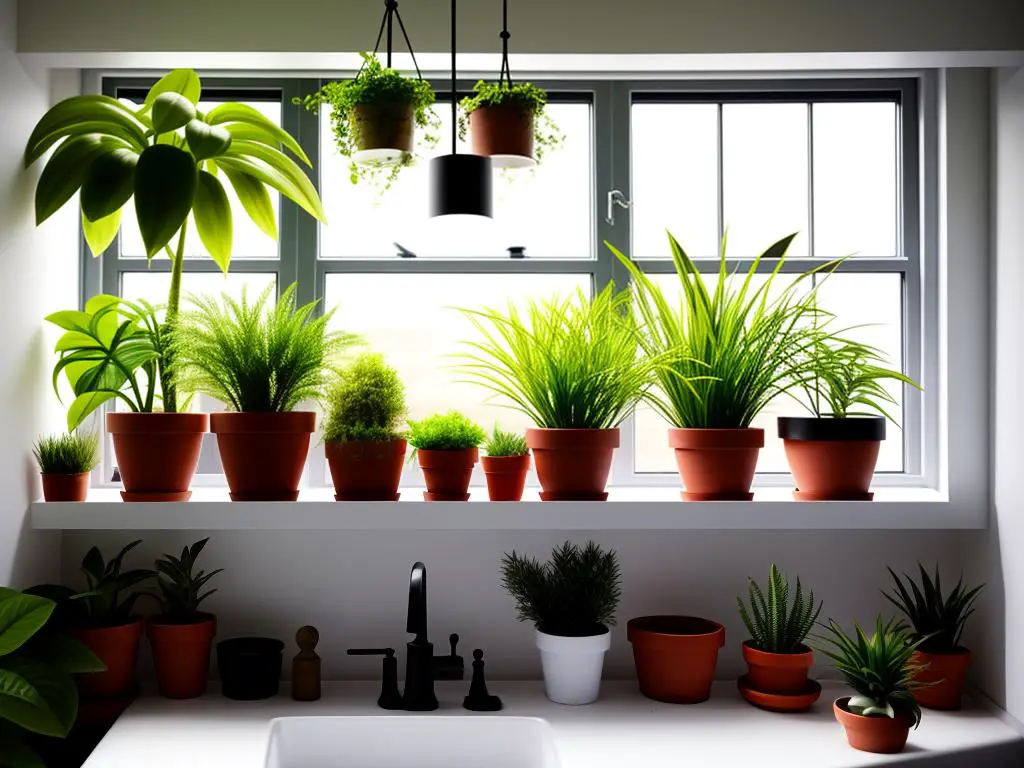Fostering life within our homes carries an inexplicably unique charm, a charm markedly accentuated by the inclusion of houseplants. Adorning our living spaces with greenery not only offers a refreshing aesthetic appeal but also imparts a sense of tranquillity characteristic of nature. With a plethora of houseplant species in existence, finding the ones that perfectly harmonise with our homemaking abilities can be a fascinating exploration. This compendium delves into an easy-to-care-for houseplants scope, encapsulating their variant native environments, water, light, soil requirements, and sharing tried-and-true methodologies for nurturing popular species such as pothos, snake plants, and spider plants.
Understanding Houseplants
Understanding Houseplants: A Brief Introduction
Submerging oneself into the soothing world of houseplants is a delight like no other. With their gentle rustling and serene aura, they bring a homely touch that invigorates our living space. Amongst the many varieties of houseplants, there are those known for their easy care. They tolerate minor errors in watering and light and continue to thrive. These include pothos, snake plants, and spider plants, to name a few.
A Journey to Their Native Environments
Understanding these easy to grow houseplants necessitates a trip down to their roots – their native environments. Pothos, often referred to as Devil’s Ivy, is native to the Soloman Islands in the Pacific. Although they can endure low light, their optimum growth occurs in bright, indirect light. Their origin in a tropical environment equips them to withstand higher indoor temperatures.
In contrast, the snake plant, named after its tall, hard leaves resembling a snake rising from the soil, hails from West Africa. It’s well-suited to arid, desert-like conditions and thus does not need much watering.
On the other hand, spider plants native to tropical and southern Africa, are characterised by their long, spider-like leaves that hang down from the mother plant, hence the name. They are the real champions in light adaptability, managing to survive in a range of light conditions.
Water, Light, and Soil Needs
Watering is crucial to plant health, albeit trickier than it sounds. Too much water can be as harmful as too less. The mantra with hardy plants like pothos, snake plants, and spider plants is ‘less is more’. Let the soil dry out completely before watering again. However, ensure you don’t ignore their water needs completely.
Talking about light, these plants are quite forgiving and can survive in varying light conditions. From the high indirect light preferred by Pothos to the low light tolerance of the Snake plant, they flexibly adapt to indoor environments.
Coming to soil needs, an important rule of thumb, particularly for these plants, is well-draining soil. They despise soggy roots which could potentially lead to root rot. A mix of potting soil with some perlite should serve well.
Specific Tips for Pothos, Snake Plants, and Spider Plants
When it comes to pothos, you could allow their robust vines to hang from your bookshelf or let them climb a trellis or pole. They are incredibly flexible and add to the aesthetic beauty of your house.
With snake plants, remember to place them in a pot with ample drainage holes to prevent waterlogging. You don’t want their roots to rot!
Finally, spider plants are notorious for producing many plantlets. Ensure you periodically remove and replant these to avoid overcrowding and maintain the health of the mother plant.
Wrap Up
Houseplants require consistent care and understanding, even the easy ones. Their modest needs of water, light and soil, when met, can see them thrive and fill your living spaces with a unique, invigorating energy. The secrets to growing them lie within their native environments and meeting their simple demands. So go ahead, delve into this vibrant world of houseplants and let their calm, gentle souls soothe yours!

Plant Care Essentials
Introduction to Houseplant Care Essentials
Houseplants bring life and character to any living space. Even the simplest varieties can turn a room into an oasis. Not to mention, they purify the air by absorbing toxins and releasing oxygen. But to keep these little companions thriving, you need to learn the basics of plant maintenance. This guide will walk you through the essential tasks involved, such as watering, pronging, re-potting, and combatting common pests and diseases.
Let’s Begin – Watering
Watering is one of the most crucial care routines yet often the most perplexing. The frequency and amount of water greatly depend on the type of your plants and the environment. As a rule of thumb, most houseplants prefer their soil to be kept evenly moist.
To tell if your plant needs watering, insert your finger into the soil up to your knuckle. If it feels dry at your fingertip, it’s time to water. Water slowly, aiming for the base of the plant until you start seeing water seeping out from the drainage holes. Avoid overwatering as it can cause root rot. Let the top inch of the soil dry before repeating the process.
Up Next – Pronging and Re-potting
Though a rather unglamorous word, ‘pronging’ is a gentler way of saying ‘loosening soil without causing damage to the roots.’ Over time, the soil in your pot may compact, making it hard for water and nutrients to reach the roots. Using a prong (a small hand fork), you can gently tease the top layer of the soil to improve its structure and oxygen flow.
On the other hand, re-potting is required when plants outgrow their space. You’ll notice this when roots start growing outside the drainage holes or the water runs straight through the pot. Choose a pot that is one size larger than the current one. Carefully detach your plant, place it in the new pot, and gently pack fresh soil around the roots.
Last But Not Least – Pests and Diseases
Your houseplants might spot some unexpected visitors. Common pests include spider mites, aphids, and fungus gnats. These creatures can cause your plants to wilt, deform, or even die. Regularly inspect the leaves, stems, and soil. If you see signs of pests, isolate the plant and treat with insects soap or a natural pesticide.
Watch out for signs of diseases too. These could be things like yellowing leaves, brown spots, or leaf drop. Depending on what you observe, you may need to adjust your watering routine, replace the soil, or improve lighting conditions.
With these tips, you should be well on your way to keeping your houseplants happy and healthy. Remember, each plant is individual, and adjusting your care to their specific needs is key to helping them thrive.

Creating Optimal Plant Environments
Indoors Under the Canopy: Crafting the Perfect Home for Houseplants
It might start off as a cosy corner attraction or perhaps as a hobby, but nurturing houseplants can quickly bloom into a passionate pastime. If the green thumb calls out to you, it’s essential to learn about each plant’s different needs. After all, every plant, like every human, has its own unique personality and preferences. Let’s delve into the verdant world of houseplants and discover how to create optimal plant environments.
Unfolding the Map: Identifying the Ideal Locations
Your roomy parlour or even your cramped study room could be the next ideal habitat for your houseplants, as long as you pay attention to a few key details. During the day when sunlight pours in, your south-facing rooms will bathe in the strongest rays. Bright, sun-loving plants such as cacti and succulents would revel in these spaces.
Meanwhile, rooms with east or west-facing windows will receive moderate light. These serve as excellent hosts for ferns and ivies. The shaded corners of your home that get less light can be home to plants such as snake plants and ZZ plants that appreciate being out of the limelight, literally.
Also, remember, plants have a penchant for stability. Once you find a suitable location for them, try not to keep changing it.
Shining the Light: Understanding Light Intensity
More than just switching on a bulb, understanding light intensity involves discerning direct light from indirect light, bright light from low light. Not all houseplants enjoy basking in the sunlight. Some may prefer to lounge in the warm glow of indirect or diffused light.
Look for signs to better understand your plant’s preferences. For instance, crispy leaves might suggest that your plant is getting too much light, while elongated stems could indicate a need for more. If in doubt, it’s always safer to err on the side of less light, as it’s easier to move a plant to a brighter spot than to repair sunburnt leaves.
Finding the Right Mugginess: Understanding Humidity Levels
Humidity can be a tad trickier to handle. While your cacti will be quite chuffed with the dry air, your tropical orchid might sulk without a fair bit of moistness. Monitor humidity levels and consider using a humidifier to help those tropical breeds, or grouping plants together, as plants can create their own humid microclimate. You can also keep some plants in your kitchen or bathroom where the humidity is naturally higher.
Setting the Right Degree: Understanding Temperature
Temperature is the last cog in this grand machine. Steer clear of extremes and you should sail smoothly. Most houseplants are comfortable in temperatures between 65°F (18°C) and 75°F (24°C). However, do beware of draughts. Try not to place plants near radiators in the winter or cold air conditioning units in the summer.
Creating an optimal environment for your houseplants isn’t just about following a set of rules. It’s about observing and understanding your green companions and their behaviour. Start slow, be patient and you’ll soon have a thriving indoor green space that breathes life into your home.

Navigating the realm of houseplants can prove an engaging journey, steeped in learning and vibrant rewards. We’ve ventured deep into understanding plant essentials, the art of positioning in optimum home locations, the subtleties of light intensity, moisture levels, and warmth control that contributes to a plant’s comfortable existence. By grasping these facets, one can ably create a personalised indoor garden, fascinating in its diversity and very much alive in its allure. A houseplant is more than just a decor element; it’s a silent, budding camaraderie that cleanses the air whilst uplifting the mood- a gift that blooms in the hands of its nurturer.
